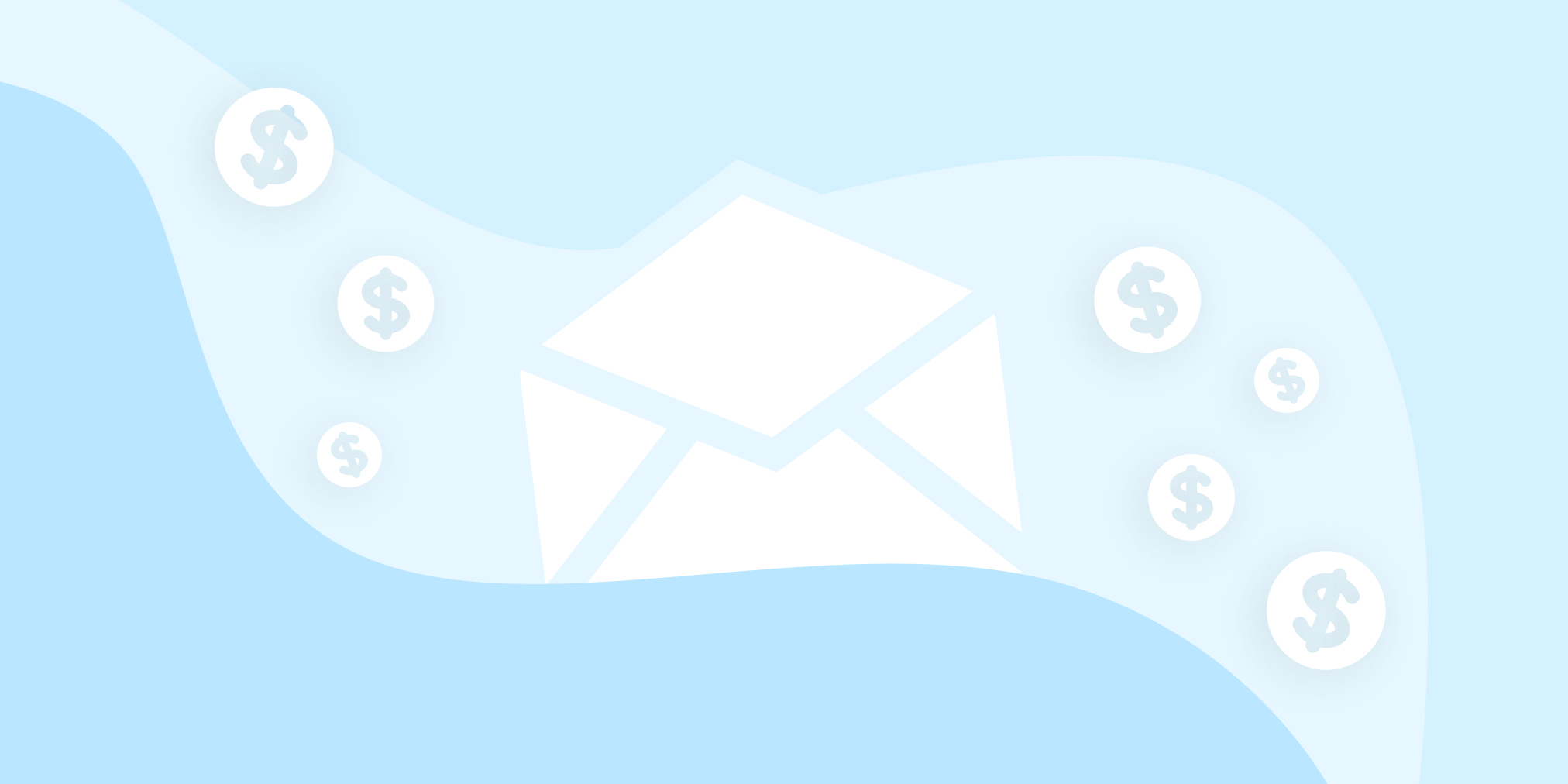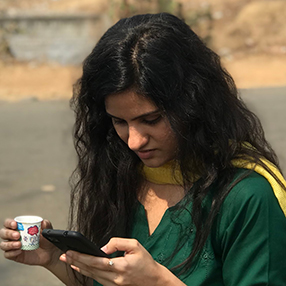Email Affiliate Marketing: How To Use Emails To Boost Your Affiliate Revenue
"Is email marketing worth it for affiliates?"
As a content creator or publisher posting great editorial content, it makes sense to question if you need to run email affiliate campaigns. After all, your high-ranking and value-packed content drives most of your affiliate revenue.
Plus, you already have emails going each time you post something new.
So what can strategic, affiliate marketing emails get you?
The answer is that email affiliate marketing helps you generate more revenue from your existing visitors and content.
Dedicated, affiliate email marketing campaigns can help your subscribers make a buying decision with a tap (on your affiliate link in your emails). At other times, your emails hand-hold them through the more involved buying decisions where they need more information than fits in a blog post.
In both cases, email helps you build a long-term relationship with your audience, so you can earn their trust and regularly introduce them to affiliate products you believe in.
To top it off, repeat buyers are 60-70% more likely to convert than the first-timers on your list. Sound like odds you'd like to bet on? Read on to learn:
- How does email affiliate marketing work?
- 3 steps to a successful affiliate email campaign
- What you need to know before you send your first affiliate email
- How to measure your campaign's results
How does email affiliate marketing work?
Email affiliate marketing is simply promoting affiliate products via email, either through direct links or intermediary landing pages. Instead of trying to convert your visitor directly on your website, you guide them through an email funnel that ultimately leads to an affiliate product pitch.
There are two main approaches:
- You can add links in your emails to your affiliate content and drive your subscribers to it.
- Alternatively, these links can take your subscribers directly to an affiliate merchant's website where they can make a purchase.

Depending on the kind of products you promote, one of the two approaches to email affiliate marketing might be more suitable.
If you're promoting an easy buy, sending a quick email with the direct buying link might just be the nudge your subscribers need to make a purchase.
But for the high-end purchases, your emails need to do more work. They need to offer the guidance your subscribers need to zero in on a choice and make an educated decision — a no-regret investment.
You get the idea.
However, most content creators aren’t strategic with their email communications.
They don't see how these emails directly tie to their affiliate revenue. If you look at case studies of the most successful affiliates, you'll see that they drive a significant part of their revenue via emails.
And I’ll show you exactly how they do that, today. And how you can do it too.
3 steps to a successful affiliate email campaign
Here’s a simple three-step process that lets you do this and drive direct affiliate revenue with your emails. You can also use these steps to improve your email marketing, in general, and generate better results from as a publisher. Here we go.
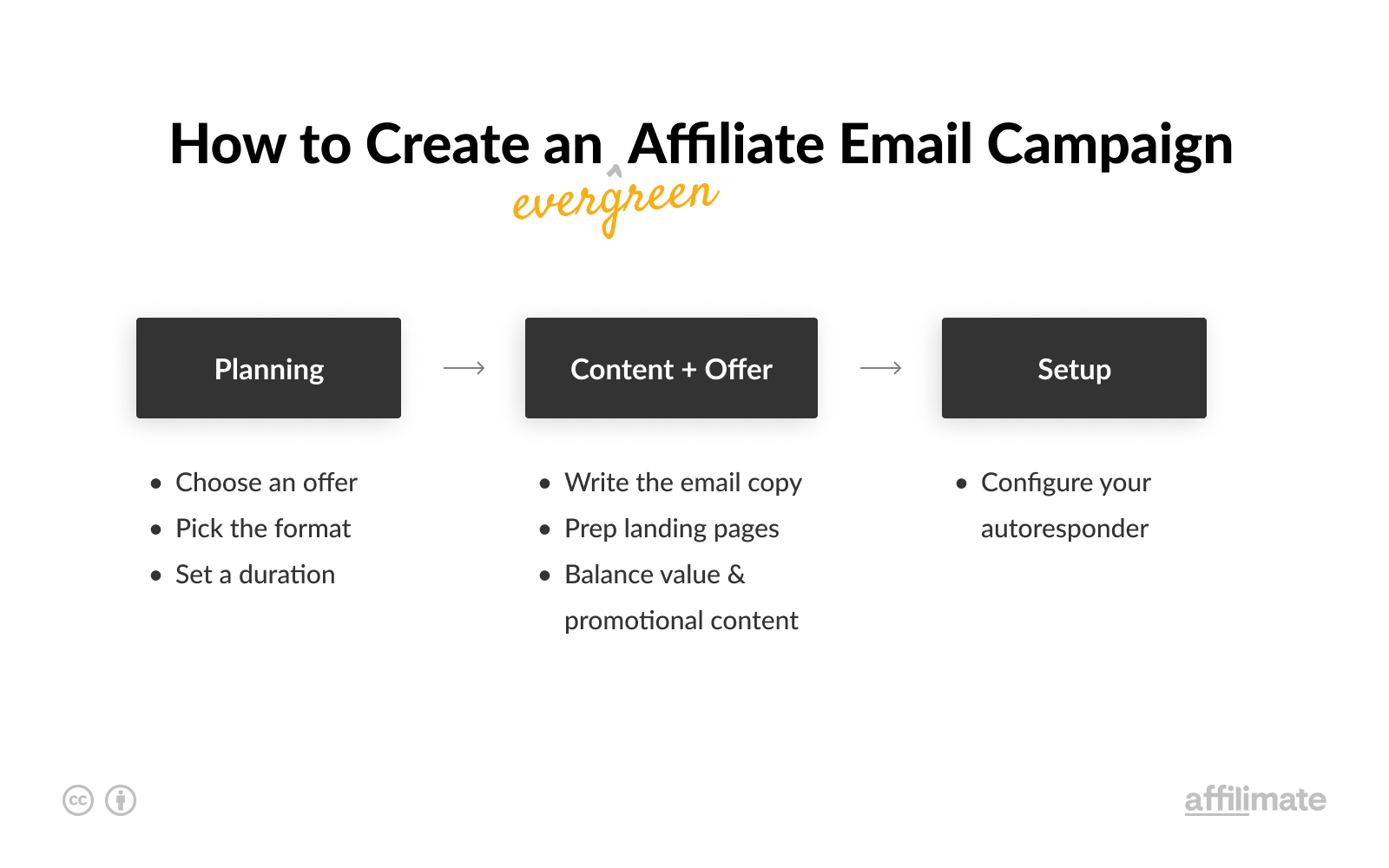
Step 1. Plan your campaign
Affiliate email marketing is different from your regular email communications with your subscribers; it's more intentional.
First, you need to think about the Buyer's Journey of your subscribers as it relates to the brands/products you promote. Depending on where they opt-in, your subscriber could still be in the Awareness stage.

And with each set of emails, you want to move the subscriber closer to Conversion.
Here's a concrete example. Suppose you're promoting a simple product, say, a headset. In this case, your subscribers can just read your review post or snippet in your email, decide if they like it, and buy using your affiliate link.
And done.
An email affiliate campaign for such a product can simply be a single email with a link to the purchase page. Even adding a shoutout for the product in your regular newsletter would do.
Check out this Daily Deals email from Wirecutter to get an idea.
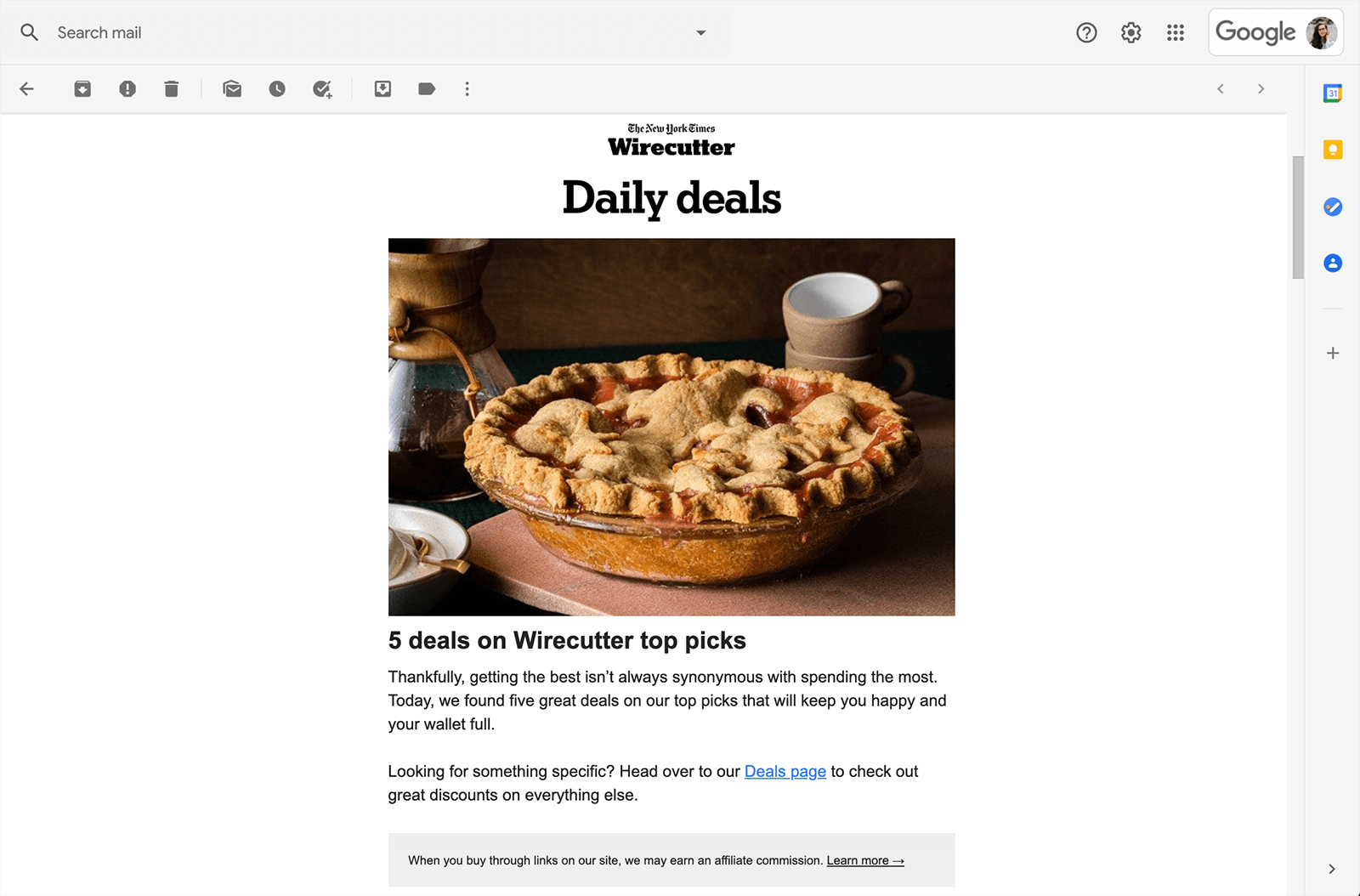
In the example below, the first two links are affiliate links and take you directly to Target to buy one of its top-selling electronic cutting machines for DIYers.
The link in blue takes you to its detailed review.
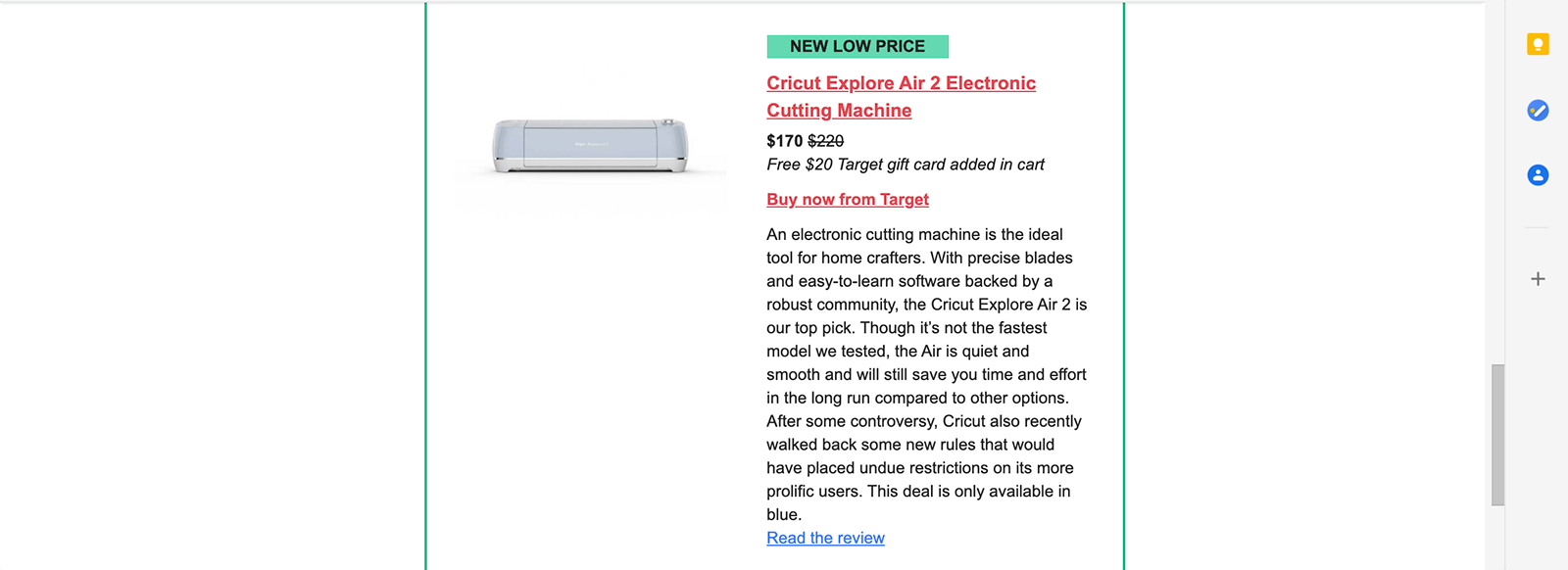
This works because the sale offers an extra incentive for the reader to make a purchase now. Maybe that fact that it's on sale is enough to get you to buy.
But what if you're not promoting a deal, and the product is more expensive?
For example, let's say you're promoting the elements of a high-end home office workspace. At this point, you're looking at a whole affiliate sales funnel to maximize your revenue.
Here's how it could look:
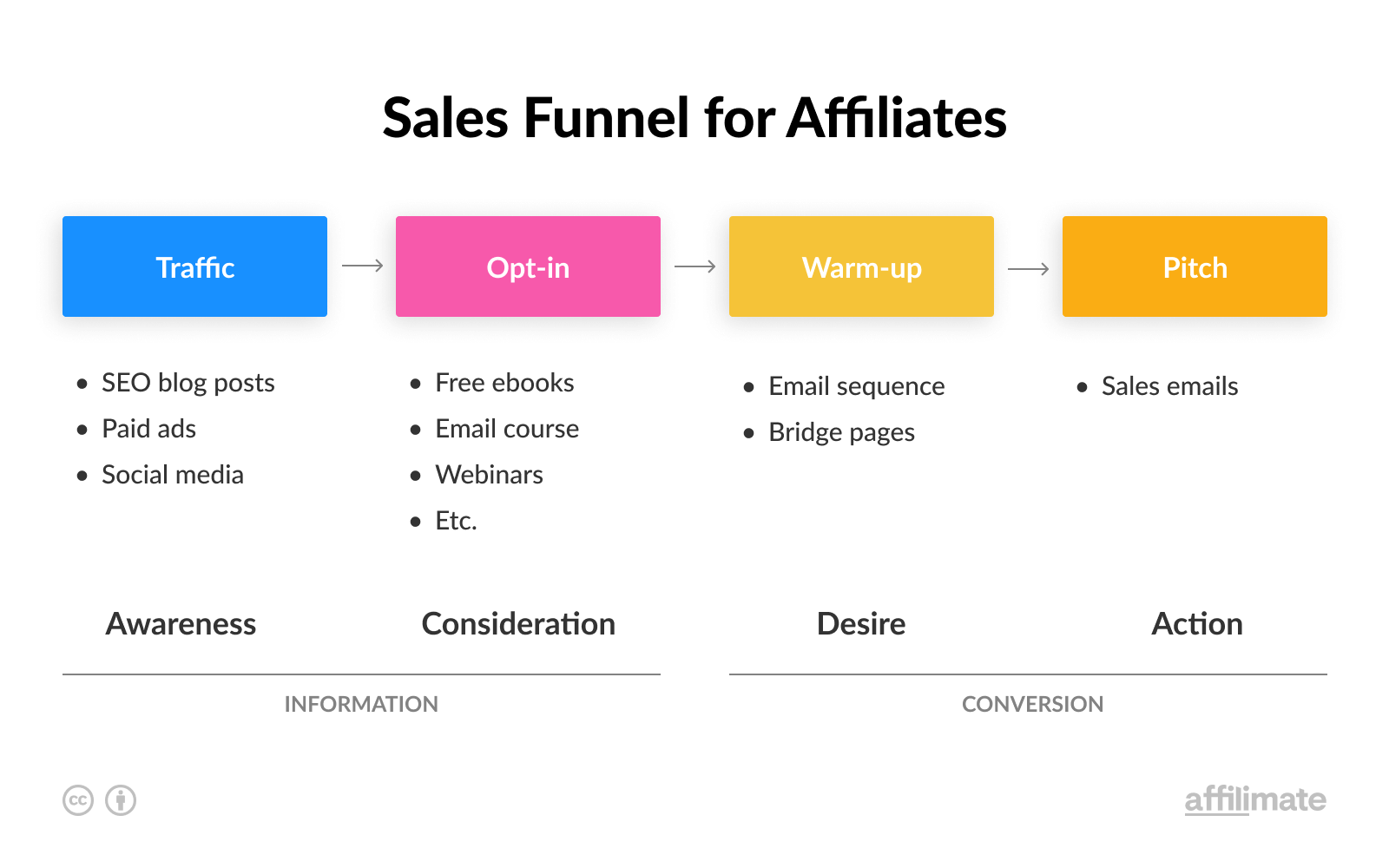
Here, your subscribers will need to know what a good workspace looks like (lighting, furniture, color palette). The essentials it must have (an ergonomic chair, 4K monitor, or studio-quality mic). And why your recommendations make sense for them (they are a creative professional).
The more complex or high-end your affiliate product is, the more content you need to offer your subscribers so they can make an informed decision and feel confident about it.
This is exactly how email gives you the multiple "touches" you need to inspire and educate your readers and help them help themselves.
Think:
- An email course — tips on identifying their needs from a workspace and prioritizing them.
- An email challenge — a one-week challenge to build the home office of their dreams.
- An email content series — discussing one part of the home workspace at a time.
- A webinar email series — leading subscribers to value-packed webinars (that can also feature brand partners).
Planning email series like these also helps you build bigger lists as they work as excellent lead magnets. They support your regular freebie (ebook, PDFs, checklists, etc.) download signup offers.
Step 2. Create your affiliate emails
Once you're ready with your email campaign plan, it's time to create your emails.
The copywriting tips for writing affiliate-marketing-focused emails come straight from email marketing solutions.
Let's look at a few guidelines:
- Mailchimp asks you to ensure that "your main message isn't centered around affiliate links," because a purely promotional email won't offer any real value.
- MailerLite explains that your "offer has to be related to your content and meet subscriber expectations."
- ActiveCampaign cautions that affiliate links "should not be the primary focus of the email," and that you shouldn't send "emails with the sole purpose of promoting another product or business."
- ConvertKit goes further to give an actual formula. It suggests that if "70-80% of your email content is about your own products, services, and information about who you are and what you do, and only around 20-30% of your content is related to affiliate marketing, you are good to go!"
The general theme is that your emails must offer value to your subscribers, and affiliate links can be part of them. So write your email copy with this in mind.
Step 3. Set up autoresponders
Depending on the categories your publication or blog hosts, you'll likely have a bunch of rich editorial pieces for each complex affiliate product(s) you promote.
While you can repurpose a lot of your editorial content as your email content, creating email communications for promoting affiliate products is still a lot of work.
But the best part is that once your emails are ready, you can set them to drip into your newest subscribers' inboxes with autoresponders, and schedule your emails to reach your subscribers automatically.
So if Subscriber A opts in to receive your emails about your Work From Home category, you can send them a welcome email right away. And follow up with your email series on work from home productivity, purely through automation.
Look at this 7-email series from The New York Times for inspiration. It's built around educating people on how they can use the internet safely, step-by-step.
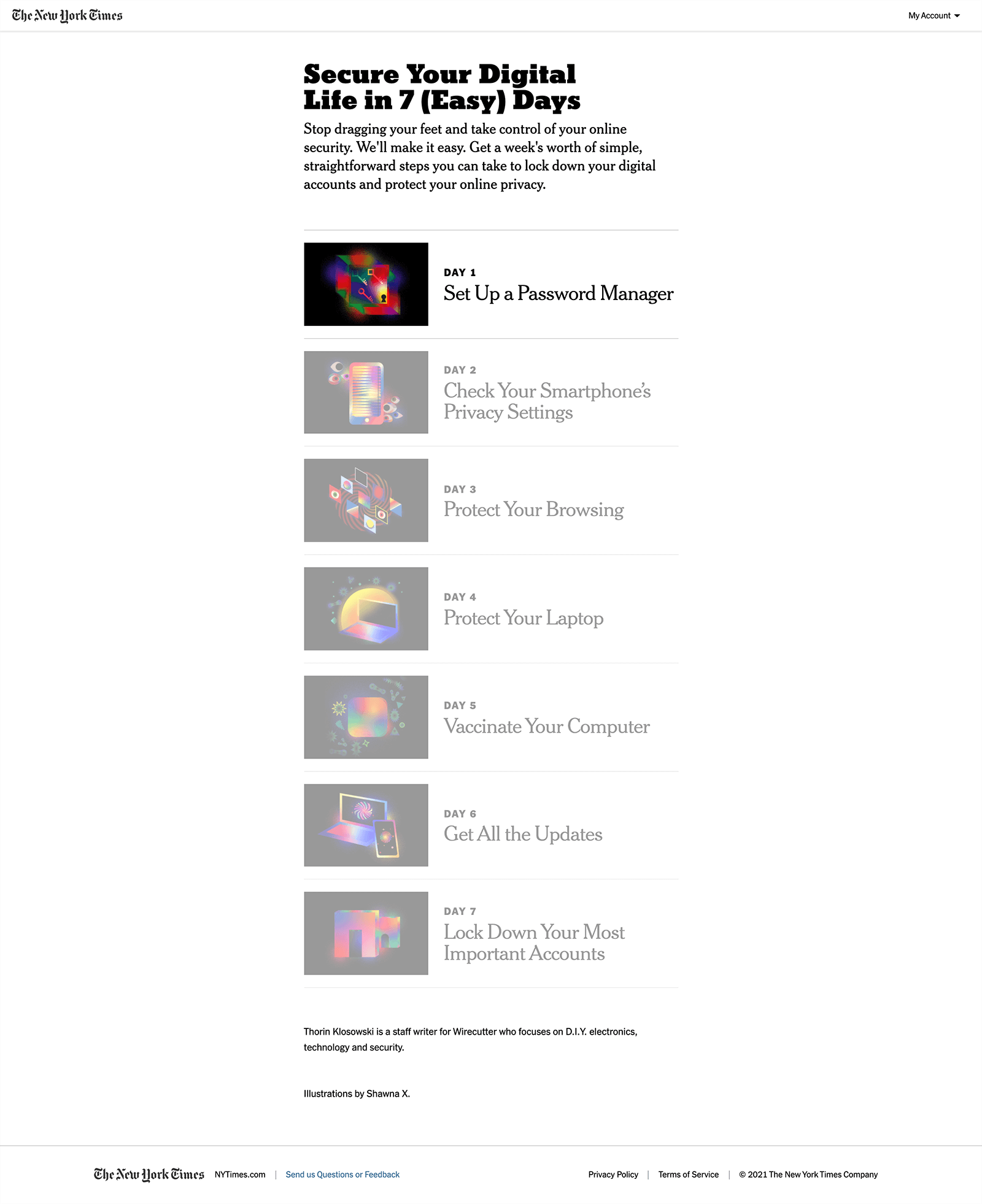
Every email in the series doesn't just offer great educational content but also allows for natural affiliate promotions:
- The first email could recommend a premium password manager.
- The third email can suggest a good browser extension with a VPN and all.
- The fifth email could review a solid antivirus program.
And so on.
The evergreen content you deliver via such autoresponders won't just help you build rapport and trust with your new subscriber(s) but also allow you to promote your affiliate links organically.
With an autoresponder, you can define your own delivery schedule. So you could send your subscriber a simple welcome email on the day they sign up and then set them to receive your email series starting the following week.
How often should you send affiliate emails?
When you see how effective email affiliate marketing is, you might be tempted to send email more often. But remember that you don't want to send emails too frequently, and frequency is relative.
For example, if an online magazine signs up subscribers for a daily email, even sending daily is ok. Its subscribers would expect a daily email and won't unsubscribe because they receive too many.
It's best to set expectations during the opt-in stage.
Tell your subscribers how frequently they'll hear from you. Once a week or every Tuesday and Friday and so on. This will keep unsubscribes in check and stop you from getting on the radar of your email marketing solution provider.
Segmenting is also extremely important when automating email communications. A reader interested in your Work From Home category might not want to hear about anything else you publish.
What you need to know before you send your first affiliate email
Before you start implementing your affiliate email marketing funnel, here are three things you need to know to do it successfully (and without getting in trouble).
1. Not all email marketing providers allow affiliate links in their emails.
Brands and affiliate networks all have their own terms when it comes to this. Amazon, for example, doesn't allow its affiliates to use affililiate links directly in email. And doing so could get you banned from the program.
When unsure, ask. Check the terms of service or contact support if you're still not clear.
The easy solution here is just to link to blog content or landing pages that contain the affiliate links instead.
2. You need to use an email marketing solution that's affiliate-friendly
Email servers (like Gmail) always have their guard up when it comes to reviewing links in incoming emails. To protect deliverability and ward off spammers, lots of email marketing solutions have stringent rules to regulate the use of their service for affiliate marketing and links.
Though most allow adding affiliate links to the email copy, automated checks/reviews are run. So review the TOS for your service before signing up and run your promotional email copy through them.
Any lapse, and you might risk an account suspension.
3. Tracking is the key to success
Tracking your email affiliate campaigns needs you to look at both your email marketing solution's data and your affiliate dashboard's data.
Email metrics like opens, clicks, and unsubscribes tell you:
- Opens: How responsive your subscribers are to your subject lines and topic
- Clicks: Their engagement level and whether you've spurred them to action
- Unsubscribers: How well their expectations are being met and if your content is valuable
When it comes to tracking revenue, this is where things get more involved.
Most affiliate programs have a campaign tracking ID you can use called a SubID. It's similar to UTM parameters like utm_source and utm_campaign, but it will show up in your affiliate reports instead of Google Analytics.
For example, with a network like CJ Affliliate and an SID like home-office-series-pt-1, your link could look like this:
https://www.anrdoezrs.net/links/1010101/type/dlg/sid/home-office-series-pt-1/https://www.wayfair.com/
A SubID like this tells you exactly which email series and which email led to the conversion.
Then, you can use a tool like Affilimate to aggregate your conversions from different affiliate networks in one place. This makes it simple to measure how your email campaign performed:
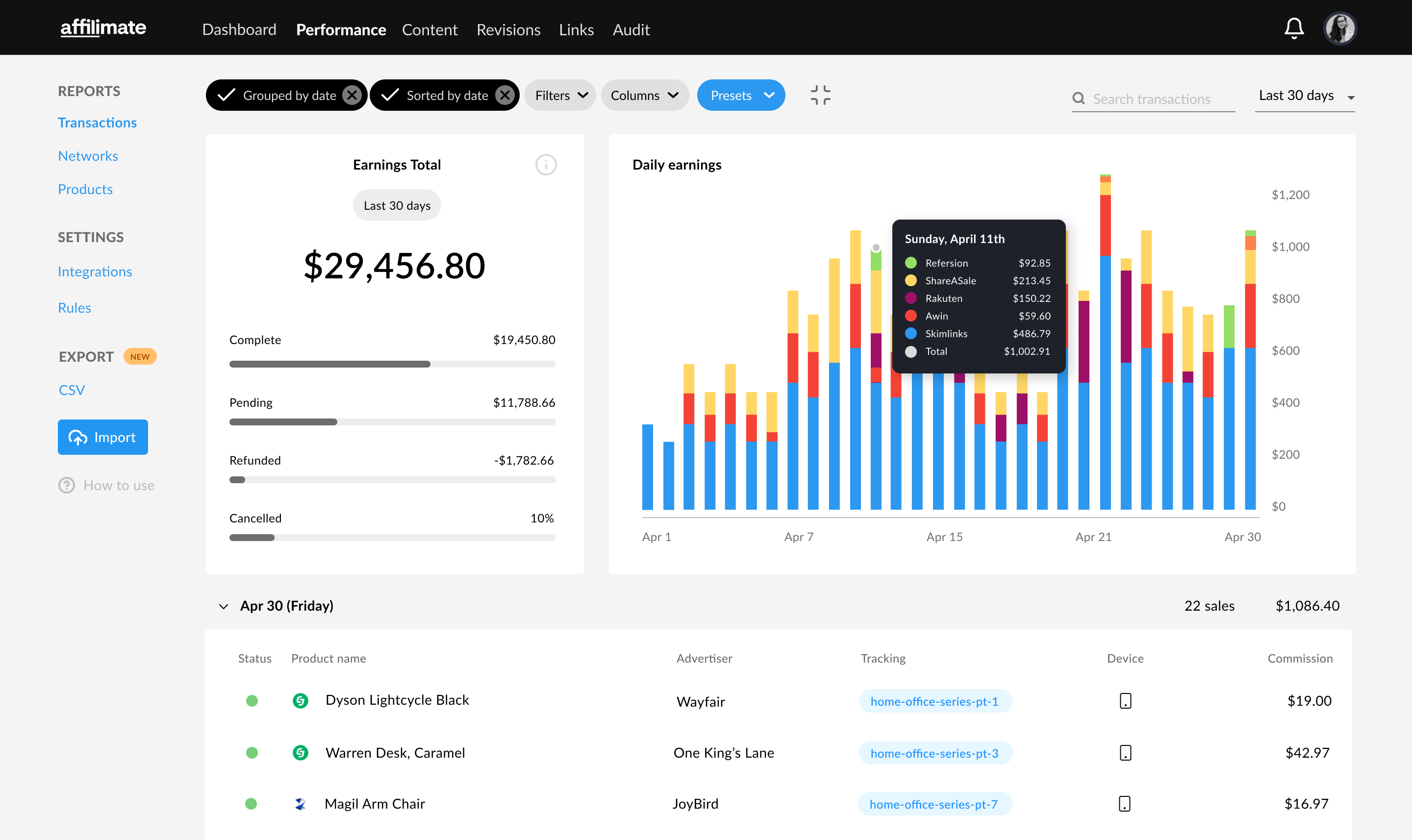
In this example, you can see three conversions attributed to home-office-series across three different emails in the sequence (pt-1, pt-3, pt-7), and on two different affiliate networks (CJ and FlexOffers).
With this tracking in place, you can easily measure:
- Which of my emails drives the most revenue?
- Which products, merchants, or networks convert best?
- What's my email series overall conversion rate?
Once you've got a winning formula, you can easily duplicate the autoresponder and adapt it for new content and products. Suddenly, email marketing for affiliates got a lot more efficient.
Wrapping it up...
As you can see, you can automate the majority of your email affiliate marketing through evergreen email sequences.
Also, once you have your campaigns in place, you have them. Post-launch, check in monthly to see how they're doing. Experiment with the under-performing ones. Most email service providers have A/B testing tools you can use to test subject lines, email content, and improve open and click-through rates.
So go ahead, and set up affiliate email campaigns for making your product and service recommendations. Make the most of your list!
(And if you liked this post, consider joining ours for the latest tips, guides, and case studies for affiliate content publishers.)
